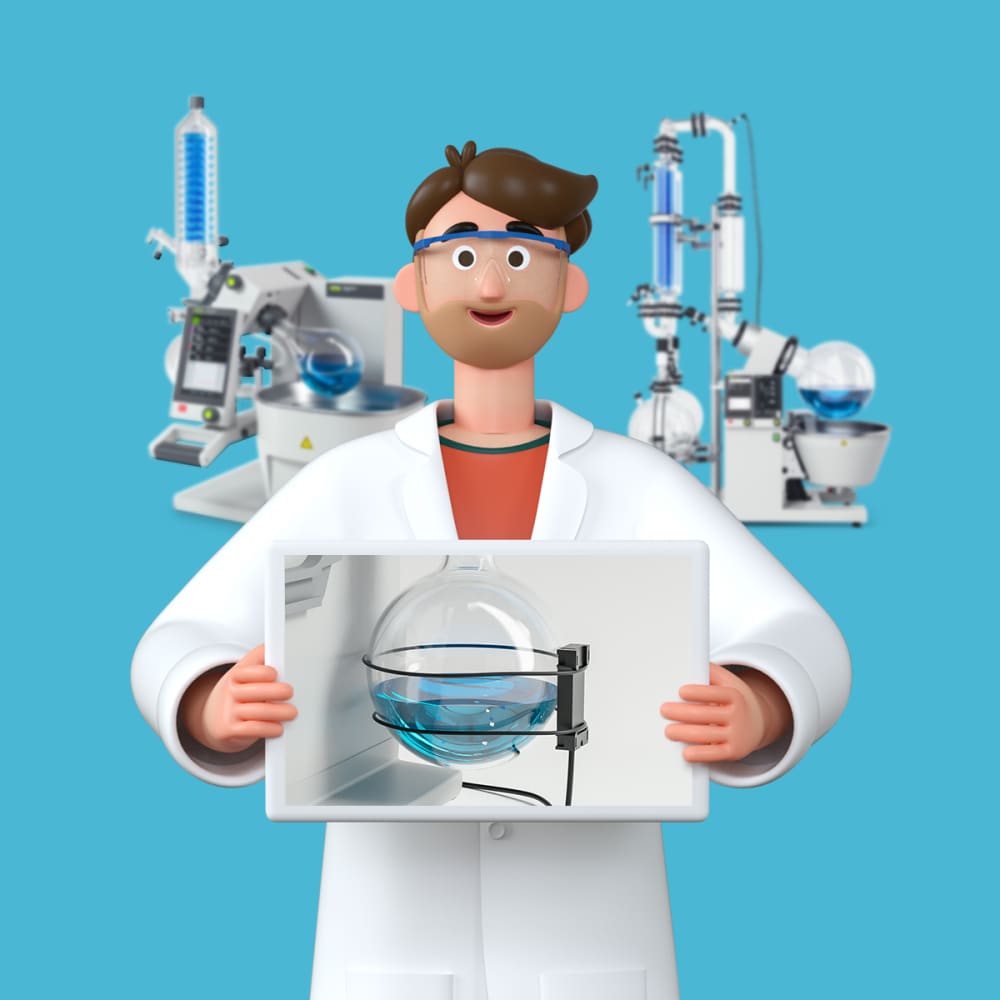Leveling Up: Embracing the Future of Evaporation

Hello, and welcome back to the “Colorful Researchers” blog. I’m Peter, one of BUCHI’s evaporation specialists, and in my first blog, I talked about BUCHI’s long history with glass. For this blog, I’d like to discuss how modern Rotavapors® integrate physical, mechanical, and technological components in a symphony of science. I’m privileged to be part of a team that understands the importance of precision in the distillation process and champions the integration of cutting-edge technology to elevate the functionality and safety of our instruments. Today, I’m excited to share insights into how the convergence of physical components, mechanical design, and digital advancements in our Rotavapors® is transforming workflows and ensuring unparalleled safety and efficiency.
From Glass to Gadgets: Technological Evolution
The Rotavapor®, now a staple in laboratories worldwide, has evolved significantly since its inception. Initially, distillation equipment was purely physical, comprising an evaporation flask immersed in a heating bath. The Industrial Revolution introduced mechanical components to the design. Adding a motor to rotate the flask helped spread the liquid sample into a thin film on the inner surface, increasing the surface area for evaporation and improving the efficiency of the process. The addition of a vacuum pump reduced the atmospheric pressure to lower the boiling points of solvents, allowing them to evaporate at lower temperatures, which is crucial for sensitive substances. Also, a condenser was added to cool and condense the vapor into a liquid, which could be collected in a separate flask. More recently, we have seen the implementation of digital components that offer much higher levels of control and automation. Our modern instruments come with digital temperature, vacuum, and rotation speed controls, as well as sensors that monitor parameters in real-time. These technological additions have transformed the Rotavapor® into a more autonomous instrument, capable of delivering high-precision results with minimal human intervention, marking a milestone in its evolution from a simple physical apparatus to a highly sophisticated laboratory tool.
A Symphony of Science
My fellow evaporation specialists and I thrive on continually improving each element of the Rotavapor®, the physical, mechanical, and technological. As I mentioned in my first blog, even the physical aspects, like glass, that have existed for millennia are still being developed and improved today. Advancements in mechanical engineering led to more than just a simple motor to rotate the flask. Over time, more sophisticated mechanical components were introduced, such as motorized lifts for the evaporation flask and improved condenser designs for better solvent recovery. But what I really like is the way these components work together – a symphony of science. For example, when a digital sensor monitors a physical property such as temperature and adjusts the heat applied to the sample. Integrating physical, mechanical, and digital elements allows for precise, efficient, and gentle solvent removal, making the Rotavapor® an indispensable laboratory tool.
The Level Sensor
The level sensor is an excellent example of the marriage of digital advancements with the Rotavapor®’s physical and mechanical aspects. Designed to assist in distilling to a specific volume, the level sensor enables the Rotavapor® to stop automatically once the desired level is achieved. This pivotal feature allows researchers to step away from the process to focus on other tasks without worrying about over-evaporation or drying the sample to complete dryness. It embodies the spirit of automation and precision that defines modern laboratory practices.
Furthermore, the level sensor can be attached to a secondary condenser on the pump, enhancing safety by preventing the condenser from overflowing. Given that pumps are often stored under the bench, an overflow could easily go unnoticed, posing significant risks as a spilled solvent may catch fire. This sensor prevents laboratory accidents by stopping the process in response to potential overflow and exemplifies our commitment to creating safe working environments.
Beyond Distillation
Integrating physical, mechanical, and digital technologies is not just about improving the individual components; it’s about reimagining what these instruments can achieve. By embracing digital advancements, we’re continually enhancing the precision and efficiency of the distillation process and prioritizing the safety of laboratory personnel. As we continue to explore the frontiers of scientific equipment development and discovery, our focus remains on delivering high-quality instruments that not only meet but exceed the expectations of the scientific community.
Uf Widerluägä,
Peter
